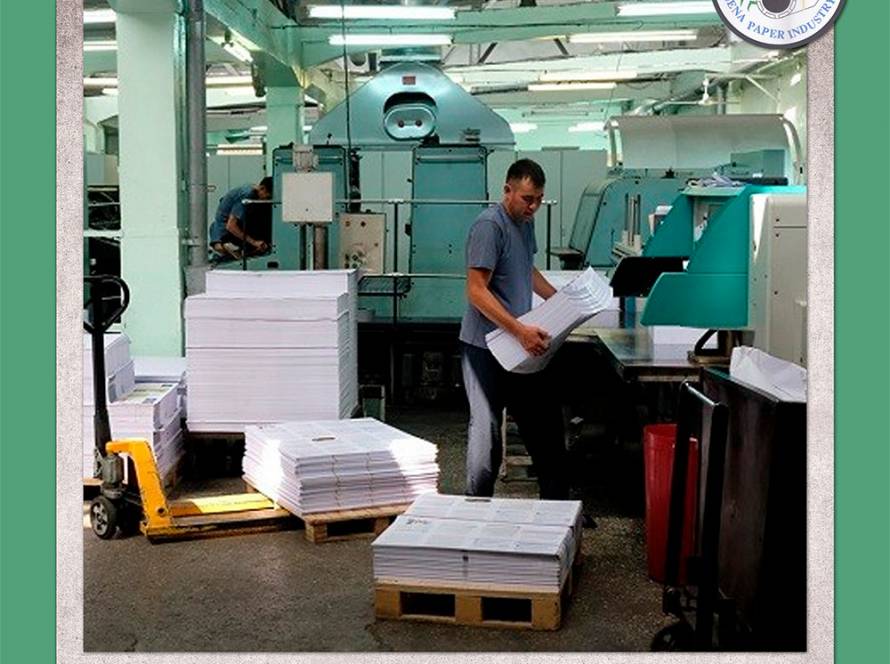In an age dominated by digital technologies and eco-conscious consumer choices, the paper industry finds itself at a crossroads. Once a cornerstone of communication and documentation, this industry now grapples with numerous challenges that threaten its traditional practices. This article explores the key issues the paper industry faces in today’s world and how it’s striving to adapt.
The Declining Paper Industry: Understanding the Root Causes
1.1 The Rise of Digital Alternatives
With the digital revolution in full swing, traditional paper-based communication has given way to emails, e-books, and electronic documents. The convenience and accessibility of digital formats have significantly reduced the demand for physical paper products. Businesses, individuals, and even governments increasingly favor digital platforms for information sharing.
This shift has not only impacted the demand for paper but also transformed entire industries. Newspapers and magazines have migrated to online platforms, resulting in fewer print editions. Educational institutions are adopting digital textbooks, reducing the need for traditional printed books. These changes have left the paper industry grappling with declining sales and shifting market dynamics.
1.2 Environmental Impact and Deforestation
One of the most pressing concerns facing the paper industry is its environmental footprint. The industry has long been associated with deforestation, leading to habitat destruction and biodiversity loss. Environmentalists and consumers alike are demanding more sustainable practices, pushing paper manufacturers to seek eco-friendly alternatives.
To address these concerns, forward-thinking companies are investing in sustainable forestry practices and reforestation efforts. They’re also exploring the use of alternative fiber sources like hemp and bamboo, which grow faster and require less land than traditional wood pulp sources. These innovations aim to reduce the industry’s reliance on deforestation, aligning it with global efforts to combat climate change.
Environmental Concerns: How the Paper Industry Faces Sustainability Issues
2.1 Innovations in Paper Production
To address sustainability concerns, paper manufacturers are adopting innovative production methods. These methods include the development of tree-free paper options, such as hemp and bamboo, which have smaller environmental footprints. Additionally, advancements in pulping and bleaching processes are reducing water and energy consumption, making paper production more sustainable.
2.2 Recycling Efforts and Eco-Friendly Solutions
Recycling has become a crucial aspect of the paper industry’s sustainability efforts. Many companies are investing in closed-loop recycling systems, ensuring that paper products have a second life. Moreover, the use of eco-friendly inks and production processes is gaining traction, further reducing the industry’s environmental impact.
Recycling initiatives not only reduce waste but also contribute to a circular economy, where resources are reused efficiently. This not only benefits the environment but also aligns with consumer preferences for environmentally responsible products.
Digital Transformation: The Impact of Technology on Paper Production
3.1 The Role of E-commerce and Online Communication
The rise of e-commerce has changed the way businesses operate, reducing the need for paper-based catalogs and advertising materials. Online shopping platforms have become the go-to choice for consumers, decreasing the reliance on physical marketing materials. Additionally, digital communication tools and platforms have decreased the demand for physical letters and memos.
3.2 Adapting to a Changing Market
To remain relevant, paper companies are diversifying their offerings. Many are exploring specialty papers, packaging materials, and art paper markets where the tactile experience of paper remains valued. This adaptability is key to survival in a rapidly evolving industry landscape.
The Future Outlook for the Paper Industry
4.1 Sustainable Practices and Environmental Responsibility
The paper industry’s future success hinges on its ability to embrace sustainable practices and prioritize environmental responsibility. Consumers are increasingly scrutinizing the ecological impact of products they purchase, and paper companies that demonstrate commitment to eco-friendly solutions will stand out in the market.
4.2 Leveraging Technology and Innovation
Incorporating technology and innovation into production processes will be essential for the paper industry’s survival. Automation, data analytics, and advanced manufacturing techniques can help streamline operations and reduce costs, making paper products more competitive in a digital world.
In conclusion, the paper industry faces significant challenges in the modern era. Digital alternatives, environmental concerns, and changing consumer preferences are all contributing to its decline. However, through innovation, sustainability efforts, and diversification, the paper industry is working diligently to adapt and find its place in a world that increasingly favors digital solutions. By addressing these challenges head-on, the paper industry aims to ensure its continued relevance in the years to come, proving that paper is not a relic of the past but a versatile material that can evolve to meet the needs of the future.


